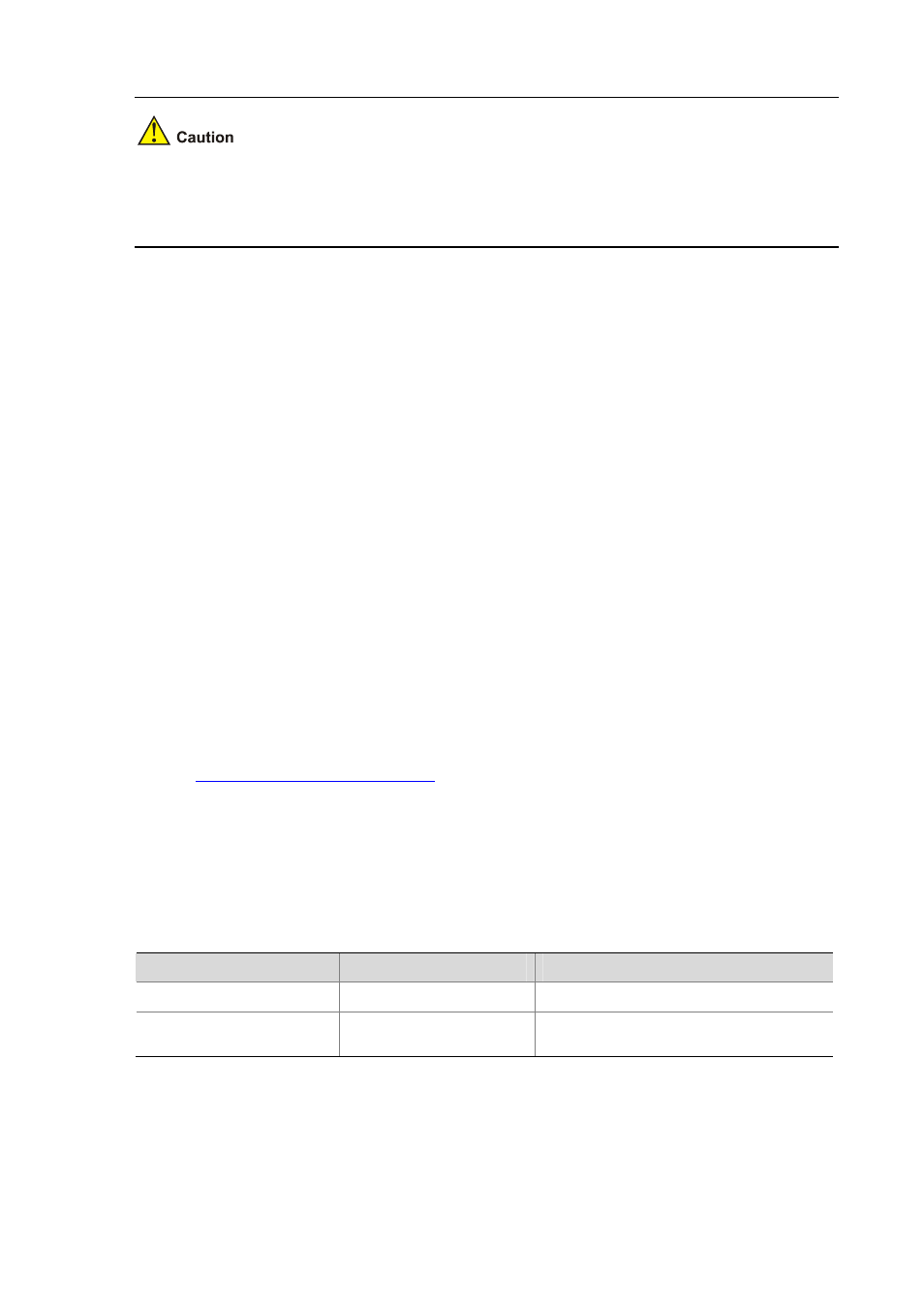Configuring traffic shaping – H3C Technologies H3C WX3000 Series Unified Switches User Manual
Page 366

37-22
As the priority of traffic classification rules is higher than that of the default rules used for processing
protocol packets, configuring traffic policing for all the packets or packets of a VLAN may affect device
management that is implemented through Telnet and so on.
Configuration example
z
GigabitEthernet 1/0/1 belongs to VLAN 2 and is connected to the 10.1.1.0/24 network segment
z
Perform traffic policing on the packets from the 10.1.1.0/24 network segment, setting the rate to
128 kbps
z
Mark the DSCP precedence as 56 for the inbound packets exceeding the rate limit.
1) Method
I
<device> system-view
[device] acl number 2000
[device-acl-basic-2000] rule permit source 10.1.1.1 0.0.0.255
[device-acl-basic-2000] quit
[device] interface GigabitEthernet1/0/1
[device-GigabitEthernet1/0/1] traffic-limit inbound ip-group 2000 128 exceed remark-dscp 56
2) Method
II
<device> system-view
[device] acl number 2000
[device-acl-basic-2000] rule permit source 10.1.1.1 0.0.0.255
[device-acl-basic-2000] quit
[device] traffic-limit vlan 2 inbound ip-group 2000 128 exceed remark-dscp 56
Configuring Traffic Shaping
Traffic Policing and Traffic Shaping
for information about traffic shaping.
Configuration prerequisites
z
The queue for which traffic shaping is to be performed is determined.
z
The maximum traffic rate and the burst size are determined.
z
The port where traffic shaping is to be configured is determined.
Configuration procedure
Follow these steps to configure traffic shaping:
To do…
Use the command…
Remarks
Enter system view
system-view
—
Enter Ethernet port view
interface
interface-type
interface-number
—